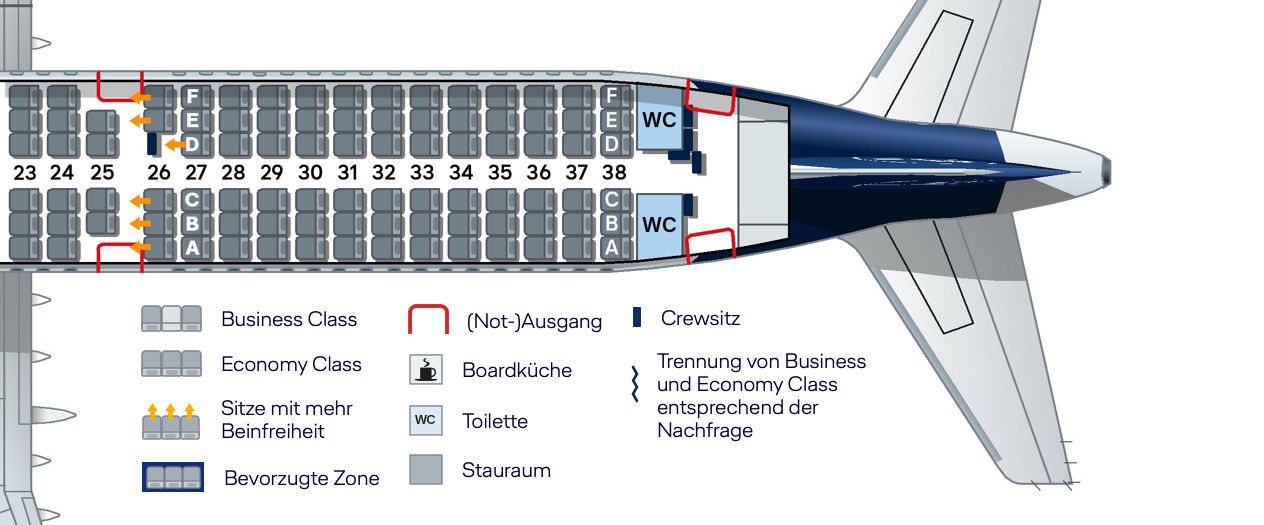
Airbus A321 Seat Map & Aircraft Overview

The Airbus A321 is the longest member of the A320 family, offering more seating capacity and higher passenger loads, making it ideal for short- to medium-haul routes.
Different airlines configure the A321 differently based on their market positioning and route needs, so choosing the right seat can make your journey more comfortable.
A321 Quick Facts
Item | Details |
|---|---|
Aircraft Model | Airbus A321 |
Type | Single-aisle narrow-body |
Typical Capacity | Around 185–236 passengers |
Range | Around 5,950 km (varies by version) |
Cruise Speed | ~Mach 0.82 |
Highlight | Stretched fuselage compared to A320, offering more seats |
Common A321 Seat Configurations
Airline | Business/First Class | Economy Class | Total Seats | Notes |
|---|---|---|---|---|
All Nippon Airways (ANA) | 8 Business | 186 | 194 | Two-class layout |
Air Canada (AC) | 8–16 Business | 168–184 | 184–200 | Two-class layout |
Air Macau (NX) | 12–24 Business | 155–170 | 179–182 | Two-class layout |
Delta Air Lines (DL) | Up to 20 First | 151–171 | 171–191 | Two-class layout |
Air China (CA) | 8 Business | 150 | 158 | Two-class layout |
Sichuan Airlines (3U) | Up to 12 Business | 177–186 | 189–198 | Two-class layout |
China Eastern (MU) | Up to 20 Business | 162 | 182 | Two-class layout |
Jetstar (3K/JQ) | – | 220–230 | 220–230 | All-economy |
Wizz Air (W6) | – | 230 | 230 | All-economy |
Thai Vietjet (VZ) | 8 Business | 200 | 208 | Some all-economy configurations |
Busan Air (BX) | – | 162–180 | 162–180 | All-economy |
Hong Kong Airlines (HX) | – | 220 | 220 | All-economy |
A321 Seat Selection Tips


Image Source: Lufthansa
- Check Airline and Layout
- All-economy layouts (e.g., HK Express, Jetstar) pack more seats but have smaller pitch.
- Two-class layouts (e.g., Air Macau, Cathay Pacific) offer more comfort in the front cabin.
- Choose Seat Type
- Exit Row: More legroom, but you can’t store large carry-ons and must be able to assist in an emergency.
- Window Seat: Great for views, but less convenient for moving around.
- Aisle Seat: Easier to get in and out, but may get more foot traffic.
- Front Row: Faster disembarkation, but often comes with an extra charge.
- Match Your Needs
- Motion-sensitive → Sit near the wing for a smoother ride.
- Want quiet → Avoid seats near lavatories and galleys.
- Travelling with infants → Bulkhead rows often have bassinet fittings.
- Use Seat Maps
- Airline websites and third-party sites like SeatMaps provide details on pitch, width, and layout.
Current Direct Flights Operated by the Airbus A321
Flight Number | Airline | Departure | Arrival |
|---|---|---|---|
CZ370 | China Southern Airlines (CZ) | Incheon International (ICN) | Shanghai Pudong (PVG) |
MF8308 | XiamenAir (MF) | Sanya Phoenix (SYX) | Xiamen Gaoqi (XMN) |
UO702 | HK Express (UO) | Hong Kong International (HKG) | Bangkok Suvarnabhumi (BKK) |
Why Travellers Like the A321
- Higher capacity: More seats than the A320, ideal for high-demand regional routes.
- Flexible use: Can be configured for all-economy high-density or two-class layouts.
- Operational efficiency: Narrow-body design allows faster boarding and disembarkation.
Summary
For Singapore travellers, the A321 is a common sight on regional Asia routes. Choosing the right seat can significantly improve your flight experience.
Seat recommendations:
- Need legroom → Choose exit row
- Want quiet → Choose window seats away from lavatories
- Want a quick exit → Choose front-row aisle seats
- Love the view → Choose window seats aligned with the window
Seat Selection Guide for Popular Airbus and Boeing Aircraft
- Airbus A380 Seat Map & Aircraft Overview
- Airbus A320 Seat Map & Aircraft Overview
- Airbus A350-900 Seat Map & Aircraft Overview
- Boeing 737 Seat Map & Aircraft Overview
- Boeing 747-400 Seat Map & Aircraft Overview
- Boeing 787-9 Seat Map & Aircraft Overview
- Airbus A320 NEO Seat Map & Aircraft Overview
- Airbus A321 NEO Seat Map & Aircraft Overview
- Airbus A350-900 Seat Map & Aircraft Overview
- Airbus A380-800 Seat Map & Aircraft Overview
- Airbus A359 Seat Map & Aircraft Overview
- Airbus A330-300 Seat Map & Aircraft Overview
- Boeing 787-10 Seat Map & Aircraft Overview
- Boeing 737 MAX Seat Map & Aircraft Overview
- Boeing 737-800 Seat Map & Aircraft Overview
- ATR72 787-10 Seat Map & Aircraft Overview
